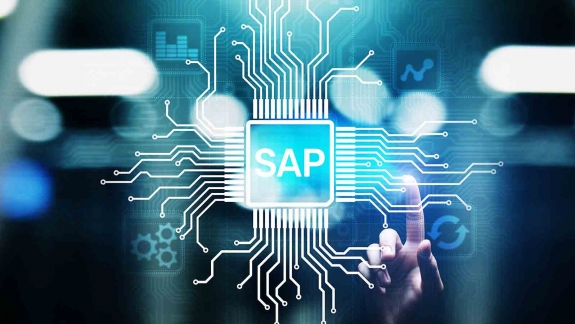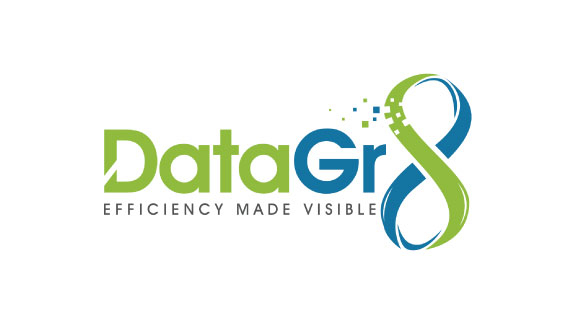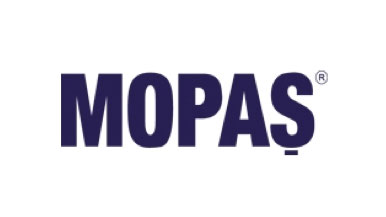Anyone running SAP will be looking at what SAP Systems Managed Services (SAP BASIS) can offer their business. At its core, BASIS consists of essentially the following services. It’s these services that will ensure that your SAP implementation runs the way you want it to without adding to your project costs.
– SAP System Architecture Services
– Installation Services
– Update and Conversion Services
– Maintenance and Monitoring Services
– Training Services
– Other Services
The following are key points to consider when using each of these services:
SAP System Architecture Services are important for the development of a well-functioning SAP system infrastructure. Projects, whether big or small, that are started without a properly designed architecture and the correct resources result in future issues and can create unexpected costs placing both the company and project at risk. It is important to determine upfront how system integrations will be carried out within the infrastructure, where internal and external network access points will be and how the load balancing tool and its application for inter-system integrations will be used. Key to a well-functioning SAP system infrastructure are: High Availability and Disaster Recovery solutions that can be implemented based on the critical nature of the work, and the Operating System (OS) or Database (DB) used. Ultimately, the system architecture design should shorten time to recoup value, reduce implementation costs, make operational conversion easier and prepare the enterprise for future business innovations and transformations as outlined in SAP’s “Build Like a Factory”.
Installation Services are always required even if they are usually demanded in new projects. Services consist of new SAP System Installation, System Copy, Add-On Installation, and more. Monitoring of the new installed product via the Product Availability Matrix (PAM) is essential to ensure that the OS and DB are suitable for SAP certified versions. It is also important that all installations follow the latest installation guidelines. Installations completed without checking PAM or the latest guidelines might require reinstallation at a later stage, leading to additional costs and labour and wasting precious time on project completion. It is also recommended that a checklist for installations is created to ensure the installer does not miss an important step. Without a checklist, important elements could be omitted or create confusion between the project and BASIS team. As an example, running a BDLS, the SGEN transaction code needs to be run after ABAP systems are copied. These types of operations need to be carried out sequentially without instructions or reminders from the project team. Furthermore, it is always important to ensure that all documents relating to the installation process, including installation logs and reports are submitted and kept on record. This is often overlooked by project teams. Finally, before the installation of a new system commences, an initial system back-up needs to be completed, an enterprise back-up strategy needs to be developed and disaster recovery scenarios in critical systems need to be considered and planned.
Since SAP allowed general access to HANA DB and 4HANA solutions, Update and Conversion Services are required more frequently. As with any installation services, the most important step in the completion of this service is checking PAM and following the latest update guidelines carefully. The success of the project depends on the preparation of a detailed plan and sharing this plan with all participants. While update and conversion processes should be handled by the technical team, this process requires participation of all affected business units. Before the update and conversion services can be implemented, the following needs to be completed:
Having a virtual system backup (snapshot) prior to downtime will prevent any data and time losses, should a problem arise during the update and conversion process. This will enable the project team to quickly revert the system to a pre-downtime state in case problems occur during updates and conversions.
There are many SAP and non-SAP tools available to monitor systems. SAP provides the Solution Manager system to clients, free-of-charge, and includes System Monitoring, User Experience Monitoring, Interface and Connection Monitoring, SAP HANA Monitoring, BI Monitoring and Job Monitoring. Although OS and DB monitoring is included in non-SAP monitoring tools, monitoring with SAP tools require the purchase of Add-Ons at an additional cost.
System maintenance first of all requires the managed system configuration of the SAP Solution Manager system, while the activation of EWA reports is also a must. These reports enable weekly health checks of SAP systems to allow for proactive measures to be taken. Processes that can be carried out during a maintenance include:
Maintenance that is carried out periodically, following checklists and varying the analyses, prevents future performance and capacity problems, while increasing accessibility of the system.
Training Services enable clients to be up to date and familiar with new products. These services include training of both the consultants and clients. Training sessions are designed to ensure that consultants have detailed knowledge regarding products and are able to carry out other services as a result of this knowledge. Becoming a member of the SAP Learning Hub provides you access to SAP’s standard resources and all training materials, giving you a leading edge. Membership allows online training sessions via the SAP website and all training materials can be accessed on the site. Other training sources include websites such as open.sap.com and SAP HANA Academy.
Other Services include processes such as License Measurement, SAP CQC Services, Performance Optimization, Backup Services, SAP on Cloud Services, SAP Systems Safety Services and Authentication. License measurements are carried out periodically on client systems by SAP and it is beneficial for clients to use these services to cut down licensing fees. In recent years many clients moved their SAP systems to the cloud. I’ll leave this discussion for another post. The importance of Backup and Safety Services become apparent whenever a problem arises, therefore they should be carried out diligently.
In this post I have discussed the problems many companies face and the matters that need to be considered when implementing technical projects. I am sure there are many other issues I have not addressed, and I invite you to bring those matters to our attention, should you require further clarity. At GlassHouse, constructive feedback is always welcome.
Mike Styer
GlassHouse South Africa, Country Manager
– SAP System Architecture Services
– Installation Services
– Update and Conversion Services
– Maintenance and Monitoring Services
– Training Services
– Other Services
The following are key points to consider when using each of these services:
SAP System Architecture Services are important for the development of a well-functioning SAP system infrastructure. Projects, whether big or small, that are started without a properly designed architecture and the correct resources result in future issues and can create unexpected costs placing both the company and project at risk. It is important to determine upfront how system integrations will be carried out within the infrastructure, where internal and external network access points will be and how the load balancing tool and its application for inter-system integrations will be used. Key to a well-functioning SAP system infrastructure are: High Availability and Disaster Recovery solutions that can be implemented based on the critical nature of the work, and the Operating System (OS) or Database (DB) used. Ultimately, the system architecture design should shorten time to recoup value, reduce implementation costs, make operational conversion easier and prepare the enterprise for future business innovations and transformations as outlined in SAP’s “Build Like a Factory”.
Installation Services are always required even if they are usually demanded in new projects. Services consist of new SAP System Installation, System Copy, Add-On Installation, and more. Monitoring of the new installed product via the Product Availability Matrix (PAM) is essential to ensure that the OS and DB are suitable for SAP certified versions. It is also important that all installations follow the latest installation guidelines. Installations completed without checking PAM or the latest guidelines might require reinstallation at a later stage, leading to additional costs and labour and wasting precious time on project completion. It is also recommended that a checklist for installations is created to ensure the installer does not miss an important step. Without a checklist, important elements could be omitted or create confusion between the project and BASIS team. As an example, running a BDLS, the SGEN transaction code needs to be run after ABAP systems are copied. These types of operations need to be carried out sequentially without instructions or reminders from the project team. Furthermore, it is always important to ensure that all documents relating to the installation process, including installation logs and reports are submitted and kept on record. This is often overlooked by project teams. Finally, before the installation of a new system commences, an initial system back-up needs to be completed, an enterprise back-up strategy needs to be developed and disaster recovery scenarios in critical systems need to be considered and planned.
Since SAP allowed general access to HANA DB and 4HANA solutions, Update and Conversion Services are required more frequently. As with any installation services, the most important step in the completion of this service is checking PAM and following the latest update guidelines carefully. The success of the project depends on the preparation of a detailed plan and sharing this plan with all participants. While update and conversion processes should be handled by the technical team, this process requires participation of all affected business units. Before the update and conversion services can be implemented, the following needs to be completed:
- examination of client specific codes
- planning of appropriate resources
- using SAP CQC Services (OS/DB Migration Check, Upgrade Assessment) and processes that need to be followed after the update, such as SPDD/SPAU corrections
- and integration tests
Having a virtual system backup (snapshot) prior to downtime will prevent any data and time losses, should a problem arise during the update and conversion process. This will enable the project team to quickly revert the system to a pre-downtime state in case problems occur during updates and conversions.
- SAP
- OS and DB accessibility
- OS-DB resource and space controls
- SAP update
- dump and background business problems
There are many SAP and non-SAP tools available to monitor systems. SAP provides the Solution Manager system to clients, free-of-charge, and includes System Monitoring, User Experience Monitoring, Interface and Connection Monitoring, SAP HANA Monitoring, BI Monitoring and Job Monitoring. Although OS and DB monitoring is included in non-SAP monitoring tools, monitoring with SAP tools require the purchase of Add-Ons at an additional cost.
System maintenance first of all requires the managed system configuration of the SAP Solution Manager system, while the activation of EWA reports is also a must. These reports enable weekly health checks of SAP systems to allow for proactive measures to be taken. Processes that can be carried out during a maintenance include:
- periodical maintenance processes
- application of EWA report suggestions
- reviewing related SAP notes and parameter adaptations regarding OS, DB and SAP
- &reviewing technical tables and carrying out housekeeping (see 2388483 – How-To: Data Management for Technical Tables note and Data Management Guide)
- tweaks regarding performance and checking of load balance.
Maintenance that is carried out periodically, following checklists and varying the analyses, prevents future performance and capacity problems, while increasing accessibility of the system.
Training Services enable clients to be up to date and familiar with new products. These services include training of both the consultants and clients. Training sessions are designed to ensure that consultants have detailed knowledge regarding products and are able to carry out other services as a result of this knowledge. Becoming a member of the SAP Learning Hub provides you access to SAP’s standard resources and all training materials, giving you a leading edge. Membership allows online training sessions via the SAP website and all training materials can be accessed on the site. Other training sources include websites such as open.sap.com and SAP HANA Academy.
Other Services include processes such as License Measurement, SAP CQC Services, Performance Optimization, Backup Services, SAP on Cloud Services, SAP Systems Safety Services and Authentication. License measurements are carried out periodically on client systems by SAP and it is beneficial for clients to use these services to cut down licensing fees. In recent years many clients moved their SAP systems to the cloud. I’ll leave this discussion for another post. The importance of Backup and Safety Services become apparent whenever a problem arises, therefore they should be carried out diligently.
In this post I have discussed the problems many companies face and the matters that need to be considered when implementing technical projects. I am sure there are many other issues I have not addressed, and I invite you to bring those matters to our attention, should you require further clarity. At GlassHouse, constructive feedback is always welcome.
Mike Styer
GlassHouse South Africa, Country Manager








